 Just like any motorized vehicle, motorcycles need engine oil for smooth operation and fuel efficiency. Motorcycle engines require lubricant with different properties than other vehicles, so it is recommended that you use an engine oil formulated specifically for motorcycles. There are many types of engine oil available today and while it may seem overwhelming to navigate your way through all these options, choosing the right engine oil for your motorcycle doesn’t have to be stressful. Read on below to learn what to consider when looking for an engine oil!
Just like any motorized vehicle, motorcycles need engine oil for smooth operation and fuel efficiency. Motorcycle engines require lubricant with different properties than other vehicles, so it is recommended that you use an engine oil formulated specifically for motorcycles. There are many types of engine oil available today and while it may seem overwhelming to navigate your way through all these options, choosing the right engine oil for your motorcycle doesn’t have to be stressful. Read on below to learn what to consider when looking for an engine oil!

Before choosing an engine oil for your motorcycle, you must first identify if it has a four-stroke or two-stroke engine. A four-stroke engine works in four sequences: intake, compression, power, and exhaust. A two-stroke engine, on the other hand, has the intake and exhaust integrated into the compression movement of the piston, eliminating the need for valves.
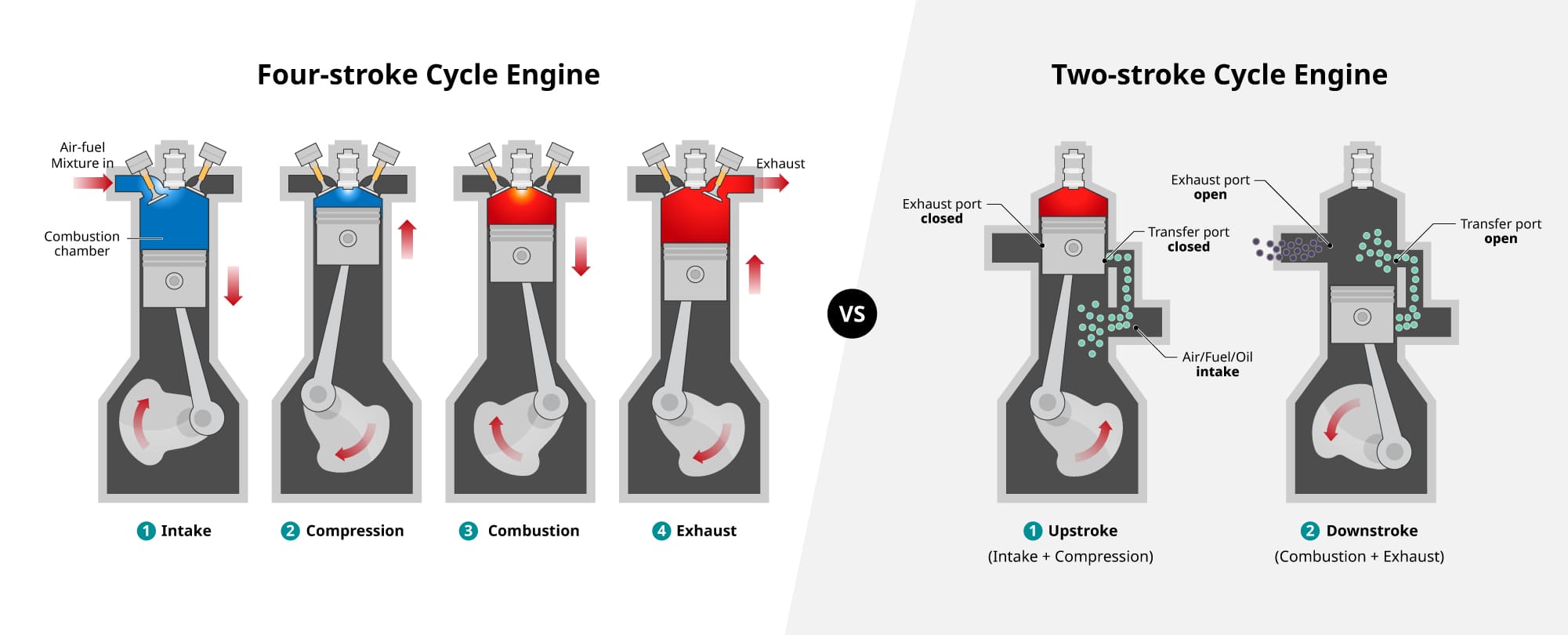
While two-stroke engines deliver great power-to-weight ratio, and are simpler and cheaper to manufacture, they tend to produce more noise and exhaust compared to the four-stroke engines. Four-stroke engines are also more fuel efficient and therefore more eco-friendly.
Those fundamental differences in the way two and four-stroke engines work mean they require different types of lubricant, so it is important to know which engine type your motorcycle has when selecting an engine oil.

Leading the world in motorcycle manufacturing and home to some of the world’s biggest brands, it is no wonder that the standards for motorcycle engines originated in Japan. The Japanese Automobile Standards Organization (JASO) specifications are a globally recognized motorcycle grading system and frequently appear on engine oil product labels.
Depending on which type of engine your motorcycle is equipped with, the applicable JASO specification may vary. For four-stroke engines, the T903 specifications introduced in 1998 serve as a global standard. For two-stroke engines, engine oil manufacturers follow the guidelines of the M345 specifications.
The T903 establishes two different sets of performance categories: JASO MA for motorcycles fitted with a wet clutch, and JASO MB for scooters fitted with an automatic transmission (CVT). JASO MA addresses the desired level of friction needed for slippage prevention in motorcycles and JASO MB addresses friction performance to provide better fuel economy for scooters fitted with automatic transmission (CVT).

By contrast, the M345 specifications for two-stroke engines delivers the level of engine protection and exhaust emissions.
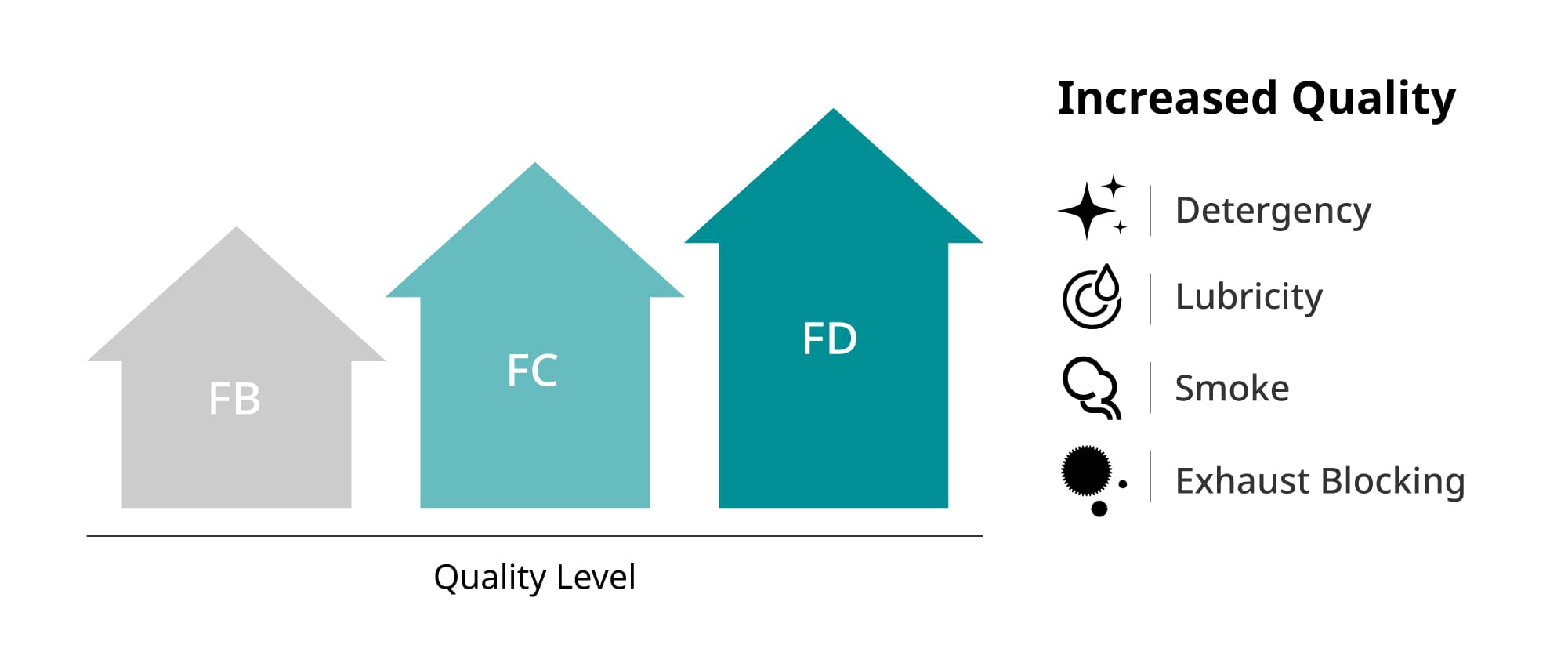

Each type of oil, whether mineral or synthetic, serves its own purpose depending on the type of motorcycle, riding style, and climate. Mineral oils, as the name suggests, are natural derivatives of refined crude oil that provide adequate engine protection. Mineral oils are relatively less efficient and require more frequent replenishment. While they are more affordable than synthetic oils, they lack longevity in comparison and extreme stress on the engine may lead components to wear out faster.

Synthetic oils are highly refined base oils that have lower levels of impurities than conventional mineral oil. Synthetic oils are also more chemically stable in comparison to mineral oils, enabling better wear prevention under high pressure such as frequent use or high speeds. They also perform better than mineral oils in extreme climates as they can withstand damage from heat and do not break down as quickly.

As you may have learned in our previous guide to choosing an engine oil, viscosity is an index that indicates the thickness of an oil. The higher the viscosity, the thicker the oil will be. Viscosity is the most important physical property to look for when choosing an engine oil as it determines the overall performance of your engine.
Oil viscosity prevents the internal surfaces of your engine from coming into contact with each other. Especially for motorcycles fitted with wet clutch, the oil must lubricate not only the engine, but also the clutch and gears. If the viscosity is too low, the gears inside the gearbox will grind against each other, which ultimately leads to higher oil temperature, less effective gear protection and increased wear. Oil with overly high viscosity, on the other hand, may take longer time for the oil getting to the cylinder walls and cause damage to important components. Viscosity is such an important part of choosing an engine oil that other factors, such as climate and riding style, must also be considered.
The manufacturer of each motorcycle generally states which viscosity range will best meet the motorcycle’s needs, so it is important that you follow the manufacturer’s guideline.
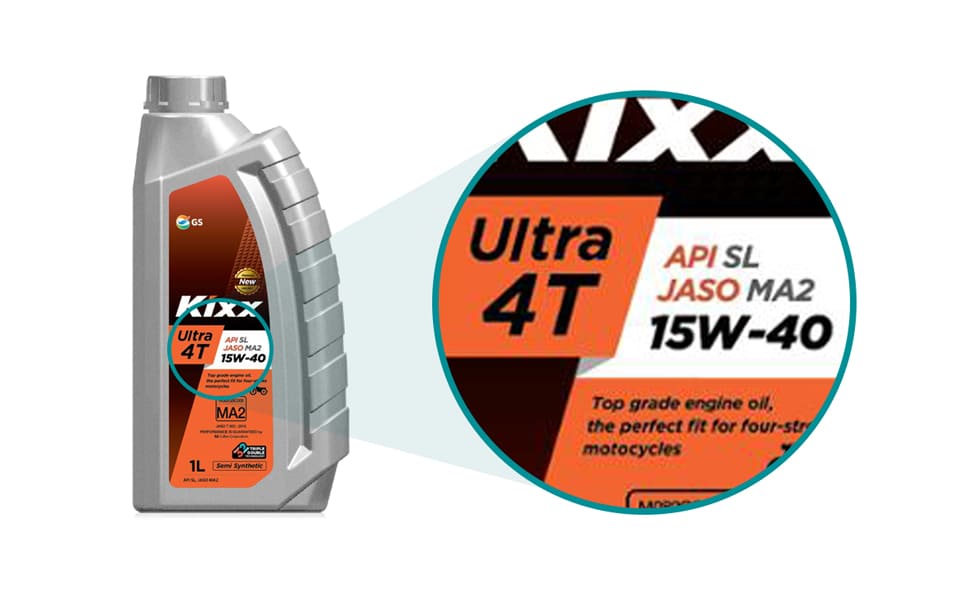 All engine oils have their JASO/API specifications and viscosity grade written on their packaging. With the information in this article, picking the right engine oil for your motorcycle is as simple as checking the label. To see Kixx’s motorcycle engine oil products, click the image to the left.
All engine oils have their JASO/API specifications and viscosity grade written on their packaging. With the information in this article, picking the right engine oil for your motorcycle is as simple as checking the label. To see Kixx’s motorcycle engine oil products, click the image to the left.
Recommended Products
Recommended Products

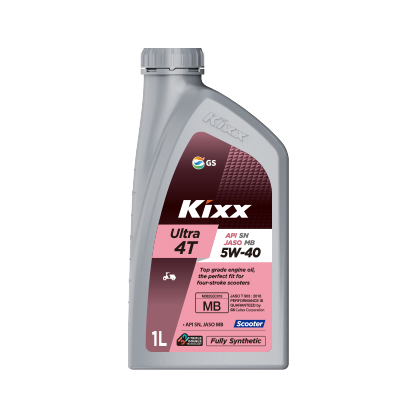
Top grade engine oil, the perfect fit for four-stroke scooters
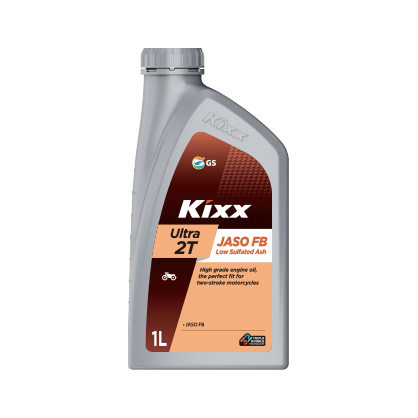
High grade engine oil, the perfect fit for two-stroke motorcycles
News | Stories | Tips & Info | About Us | Product Finder
GS Caltex Address:
GS Tower 508, Nonhyeon-ro, Gangnam-gu, Seoul, Republic of Korea
Copyright © 2024 GS Caltex Corporation. All rights Reserved
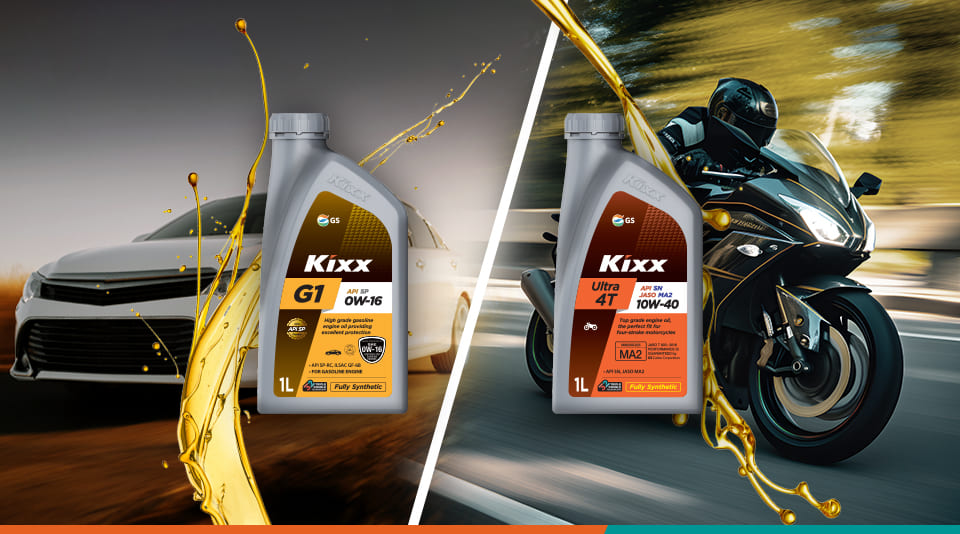

![1121_ENG_How to Change Bike Engine Oil_ | Kixx Newsroom [Kixx Tutorial] How to Change Your Bike Engine Oil](https://622ee118.delivery.rocketcdn.me/wp-content/uploads/2023/11/1121_ENG_How-to-Change-Bike-Engine-Oil_-1024x576.jpg)


